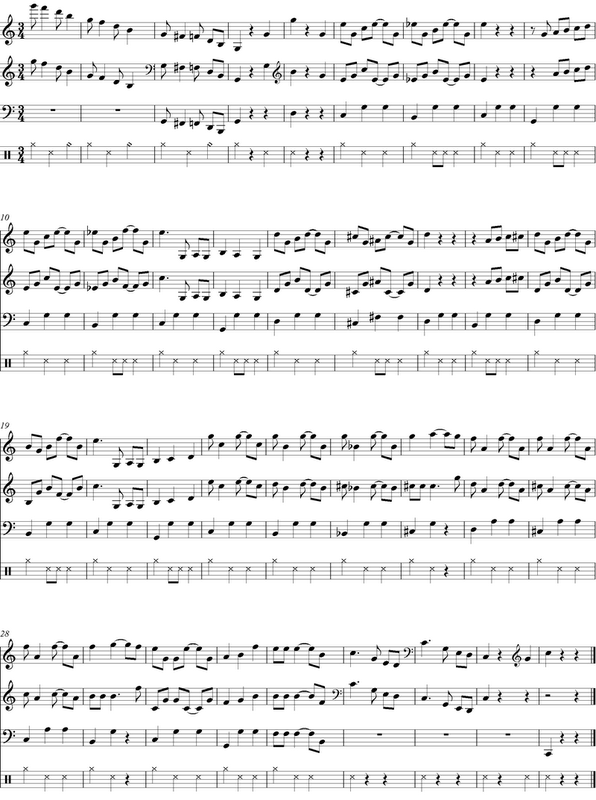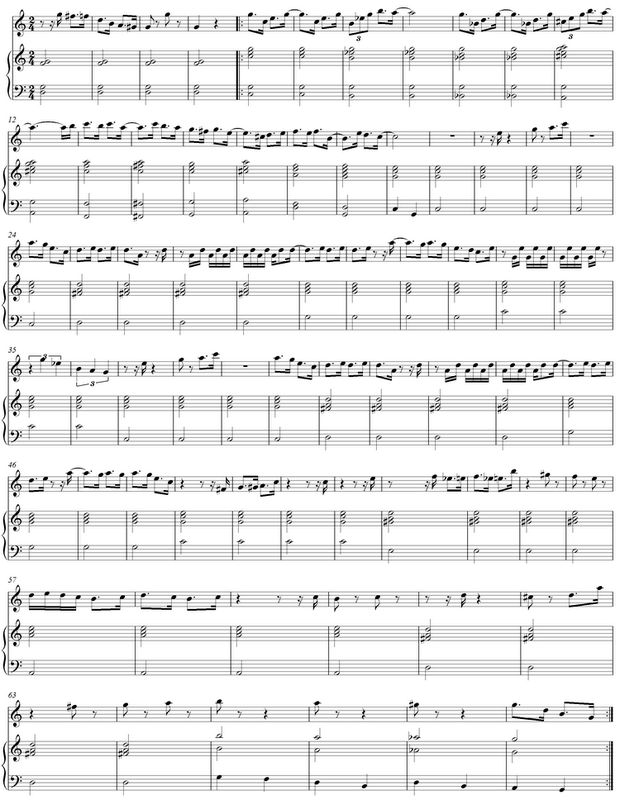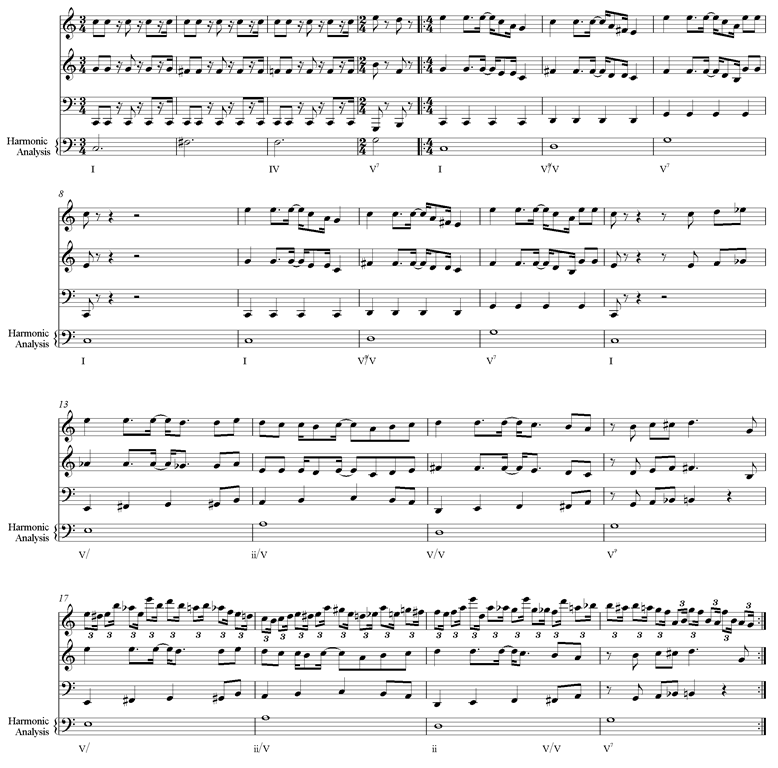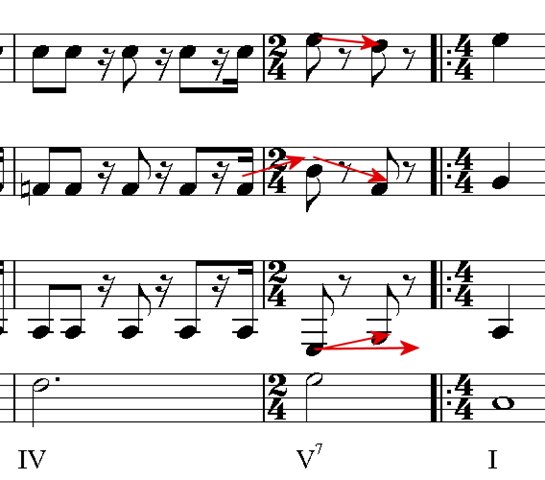Now that my masters research is completed, turned in, published, and presented at a regional music theory conference, it is time to move on. I have recently become attracted to the music of Super Mario Bros. 2 (NES, 1988) for several reasons.
- The game is not the “real” Super Mario Bros. 2. It is a “Mario-tization” of Yume Kojo: Doki Doki Panic, a Japanese game for the NES. They did not get our version of SMB2 until 1993.
- The music is composed by ???. Some sources say Kondo is the actual composer of SMB2, but other sources (namely a soundtrack and various bios) claim that Hirokazu Tanaka is the actual SMB2 composer.
- The Title Music…
Which brings me to a look at the Title Music for SMB2.

This score separates the four tracks of the SMB2 Title Music. I have linked a YouTube video below of the audio and corresponding visuals to this tune.
The first thing to recognize with this is the obvious remix of the Water World Music from the first SMB. Check the video below...
This is the main reason this tune first caught my attention. Why would the Water World music, a relaxing tune to reflect the music of swimming through dangerous waters be reworked as a title theme? It is worth pointing out that the first SMB did not have a title theme, so what are title themes for anyways? Hard to tell how this tune fits into the whole picture until we see the whole picture (we’ll get to that much later).
As for how the tune works, it actually has some interesting elements to it. What sounds like a simple oscillating Dominant-Tonic bass line is actually colored by some very interesting chords.

Above is the harmonic profile of this tune. The numbers underneath the chords refer to the measure numbers that the harmonies support. Lets walkthrough these harmonies and what they are doing:
Introduction
1-5: G Major (V) – dominant introduction leading to tonic of theme
Phrase A
6: C Major (I) – tonic chord
7: Technically a G Augmented Triad – the composer is creating a “dominant-like” chord here by flatting the root and third of the tonic triad, and grounding the harmony on the dominant G.
8-10: C Major (I) – a return to tonic
11: See 7
12-13: C Major (I) - a return to tonic.
Phrase B
14: G Major (V) – shifting tonal areas to G for a quick emphasis on Dominant
15: Like 7 and 11, this chord tries to create a sense of dominant, but this time all three notes of the tonic triad are flattened to create a Gb or F# Major triad. This could also be seen as a D augmented with an added 7th, which would explain why it sounds so similar to the earlier G Augmented triad (even though the overall harmony is strictly major).
16-18: G Major (V) - Instead of repeating the same harmonic motion as before, this time, the tune stays on G Major.
19: GMm7 (V7) - A seventh is added to create a dominant seventh to return us to tonic.
20: C Major (I) - Tonic.
21: G Major (V) - Dominant “tag” to lead us into a new section of the tune.
Phrase C
22: C Major (I) – starting the new section firmly in tonic.
23: G Major (V) – moving quickly to dominant
24: G Diminished – By flatting the third and the fifth of the dominant triad, the music continues its downward spiral.
25: C# diminished - The Db, now C#, creates a new triad that leads cleanly into D minor.
NOTE: 24 and 25, could most likely be read as a G Fully Diminished 7th chord, but this reading reflects the notes and bass lines that predominate.
26: D minor (v/V) – starts a new downward decent.
27: F Augmented – By dropping the root down a half step.
28: F Major (IV) – Which brings us back in to traditional harmonic motion.
29: G Major (V)
30: C Major (I)
31-32: G Major (V)
33-36: C Major (I)
What is interesting to me are the similarities between Phrase A and B, even though the outlined chords are different qualities. Having an Augmented chord build on scale degree 5 vs. a Major VII and how they seem to function the same. Also in Phrase C, the downward motion happens twice, and each time it is handled differently, but to basically the same effect.
Does this make you want to go pull up some vegetables and throw them at the nearest shy guy?







